When SEGA dropped out of the hardware business, SEGA fans wanted more games than ever before. Sadly, that didn’t happen as best as it could have. While several great SEGA games came to the west, several never saw a release outside Japan. In part two of this SEGA retrospective, we go through every system’s Japanese exclusives and add our own opinions on games SEGA should have localized and how they could have handled the Japanese line-up better.
PlayStation 2, Xbox & GameCube
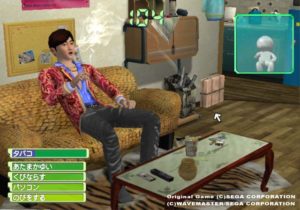
The PlayStation 2 was the system that Sega started its third party development on. PS2 had all three games from Sega’s music studio Wave Master, which branched out to produce the following: Roommania #203, Panic! (remake of the Mega CD game, localized as Switch!) and New Roommania: Porori Seishun. The Tsuku sports simulator series continued for Japan for twelve entries. Three horse racing games, five football games and three baseball games (on a side note, a non-simulation baseball game was released, Gekitou Pro Yakyuu) . Amazingly, one game actually made it into western regions – Pro Soccer Club o Tsukurou! Europe Championship, which was released in Europe as Let’s Make a Soccer Team!.

Another successful Japanese franchise continued well into the PS2 era, which was Sakura Wars. Which was the remake of the first entry in 2003, in 2004 there was a remake of the third game and a prequel to the fifth entry. The fifth entry actually did it make it to the western markets, however with a five year delay and not published by SEGA (NIS America published). The board game collection from the Dreamcast Guru Guru Onsen, Online Games: Dai Guru Guru Onsen, continued on. Puyo Puyo actually got localized since 2001, when Sega acquired it. However that stopped with Puyo Pop Fever 2, and subsequent entries. Surprisingly, Sega localized three of the four entries of the rebooted Shining entries, bar 2007’s Shining Wind. Weirdly – Sega Rally 2006 was not localized, despite it always being an international franchise. Kamaitachi no Yoru 3 is a visual novel that Sega released through a publishing deal with developer Chunsoft (there will be several games by them in this article).
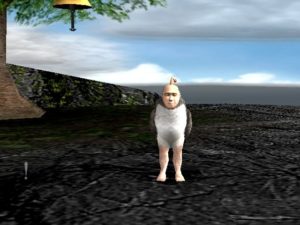
The quirky Dreamcast game Seaman, received a sequel with Seaman 2: Peking Genjin Ikusei Kit. The Typing of the Dead: Zombie Panic is the port of the classic Typing of the Dead. Remember the grand strategy games of the last part? Sega released one again with Tenka-bito. Sega Ages returns, with Sega Ages 2500 with whopping 33 volumes. Sadly tough, only the poorly received early entries got localized in the Sega Classics Collection released in 2005. The remakes of Phantasy Star 1 and 2, as well as the ports by M2 never made it into the West. Even games that got released in the West before like Panzer Dragoon, Die Hard Arcade, NiGHTS etc. never made it out in the West. Sega also produced 2D shoot ’em up Thunder Force VI, long after Technosoft disbanded.
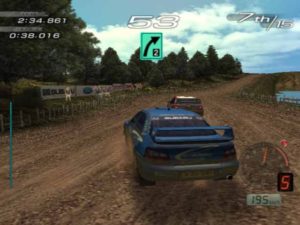
Now to the licensed games. Appleseed EX was an action RPG/shooter. Guilty Gear developer did a Fist of the North Star game, The Initial D arcade franchise also received a port, with Special Stage. It is based on Version 3.
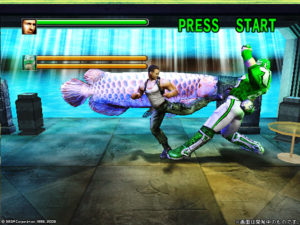
The PlayStation 2 was a perfect opportunity to let Sega release all kinds of games. PS2 opened the floodgates to companies like NIS America, Atlus USA etc. to release previously too niche games, such as JRPG Visual Novel type games and other quirky games. I think that Roommania and Sakura Wars (the remake of the first game especially) could of been released in the West. Typing of the Dead and Seaman are some of the famous Dreamcast you always hear people go on about, and would of been good to have them release on PS2. Other famous Sega games that people go on about are the various games that are refurbished in the Sega Ages 2500 series. All those games should have come out here. People complain that Sega never managed to release their Saturn catalogue that much, but Sega gave them plenty coverage on PS2. NiGHTS, Panzer Dragoon, Dynamite Deka, Sega Rally and so on. Also the arcade racers Initial D and Sega Rally should of come come out too, especially since both have had some international presence (Initial D only in the arcades, but still). And because all previous Thunder Force games were released, the sixth one should have also released.
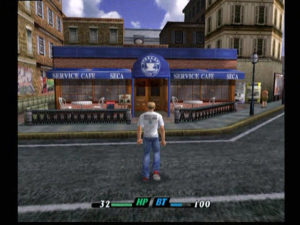
Gamecube and Xbox have nothing of note, there were two sports related sports games on Gamecube (Horse racing and baseball), and on Xbox, Rent A Hero No. 1 was also on Dreamcast, however the Xbox was once planned to be released in the West. Rent A Hero looks pretty neat, and I think could of been a cult classic like much of Sega’s output on the Xbox.
Handhelds
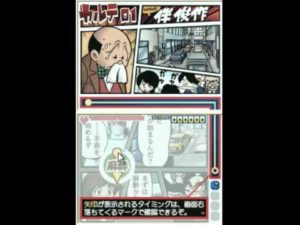
Now let’s go over GBA, DS, PSP, Vita and 3DS. On Gameboy Advance, there were four games. One sports game, a football entry in Sega’s sports simulator series with J.League Pro Soccer Club o Tsukurou! Advance (like on PS2 – surprisingly a baseball game came over which was Baseball Advance). Lilliput Oukoku: Lillimoni to Issho Puni! is an Animal Crossing esque simulation game, based on a Japanese children property. Bleach was a major tie in for Sega for a long time. A lot of those games came over to the West – tough a few didn’t, such as the Gameboy Advance one: Bleach Advance: Kurenai ni Somaru Soul Society.
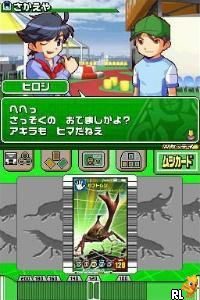
The Nintendo DS had a very large amount of games. Sega probably released more Japan only than ones released in the West. Let’s start with sports again, two baseball ones (Pro Yakyuu Team o Tsukurou!, Pro Yakyuu Team o Tsukurou! 2), two soccer ones (Soccer Tsuku DS: Touch and Direct, Soccer Tsuku DS: World Challenge 2010). Now to the licensed games – Black Jack: Hi no Tori Hen (a minigame story hybrid – like Feel the Magic XX/YY), Blazer Drive (traditional RPG game), Bleach DS 4th: Flame Bringer (the sole unlocalized one, a beat ’em up platformer), three Doraemon games Doraemon: Nobita to Midori no Kyojinden DS (a platformer), Doraemon: Nobita no Shin Makai Daibouken DS (card battler), Doraemon: Nobita no Kyouryuu 2006 DS (also card battler), Suzumiya Haruhi no Chokuretsu (a visual novel).
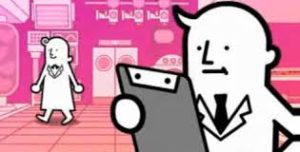
Now on to the huge subcategory of edutainment and kids titles. Sega has a huge history with this, as evident by the last part. The Game Gear “Kids Gear” brand in Japan. The Sega Pico or the Sega AI Computer. With the success of casual and younger audiences on the DS, Sega saw the attempt to make numerous titles. Either way, here all the titles, first the kids titles, which are actually adaptions of the recent kids arcade game genre which we will get into later. Three entries of the Mushiking franchise (are you aware of the cat fights in Yakuza 0, gameplay is partly based on that). Rekishi Taisen Gettenka: Tenkaichi Battle Royale is a four player battle royal game (a Smash Bros. clone actually) in a feudal Japan setting. Then there are two games aimed at girls, sort of dress up games with minigames, Love and Berry: Dress Up and Dance! and Lilpri DS: Hime-Chen! Apple Pink. Kado De Asobu! Hajimete No DS is a game teaching very young children the basics of language and pictures. This game and Mushiking, Love and Berry actually use physical cards, using Sega’s manufactured card reader.
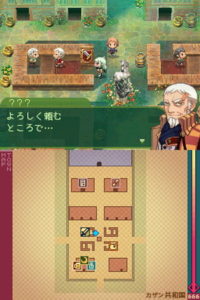
Now to the edutainment/casual titles, which there are many of. Kaite Oboeru: Dora-Gana was a game based on Doraemon, teaching kids Japanese characters. Mainichi Shinbun 1000 Dai News is a quiz/learning game about one Japan’s largest newspapers. Onsei Kanjou Sokuteiki: Kokoro Scan is sort of a minigame collection where the microphone of your Nintendo DS picks up the emotion of your voice. Saitou Takashi no DS de Yomu Sansyoku Ballpen Meisaku Jyuku is sort of a tool to help Japanese people to read complex books. Shikaku Kentei DS was a quiz game, but not in a Brain Age sense, but rather an extensive general knowledge. Shiseido Beauty Solution Kaihatsu Center Kanshuu: Project Beauty is a game related to make up and beauty tips, using the DS camera accessory. Touch de Zuno DS is actually a arcade game adaption of the edutainment arcade game with simple visual puzzles. It is actually a sequel as there was a first Touch de Uno, which was actually localized as Brain Assist. Confusing I know. U-Can Pen Ji Training DS is a tool to learn Japanese characters. Remember Sega’s pet simulator on the Game Gear? It made a comeback with Yume Neko DS. Nintendo didn’t actually deliver cats until the 3DS.
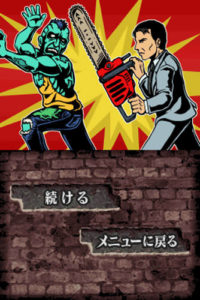
Zombie Shiki – Eigo Ryoku Sosei Jutsu: English of the Dead a Typing of the Dead variation, made as a learning tool for the Japanese to learn English.
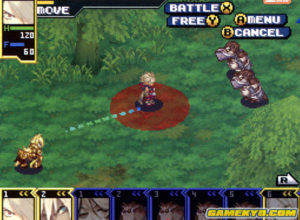
Now to the original “core” games. 7th Dragon was a traditional RPG. Shining Force Feather was an SRPG. Fushigi no Dungeon: Fuurai no Shiren DS 2: Sabaku no Majou is the classic rouge-like Mystery Dungeon game by Chunsoft (the first game actually did release here). Dramatic Dungeon Sakura Taisen: Kimi Aru ga Tame is also based on that same gameplay system. Sangokushi Taisen DS is the handheld game adaption of the card-based strategy arcade game.
Much like PS2, I think the Nintendo DS gave a wide opportunity for Sega to release a wide variety of games. It’s not like Sega did not try however. However there is still a number of games, I think should of been localized. First is Kokoro Scan, which I think is a unique game – Sega was known for Seaman and its microphone, so I think that would of made sense (I’m not aware of an other DS microphone games that pick up nuances of the voice). Then there the RPG game 7th Dragon, which had many popular elements for fans of old school RPG’s. Shining Force Feather is still the only new Shining game that appeals to the fans of the Shining Force SPRG’s. Sangokushi Taisen also is supposed to be really good, and given how it is a major brand for Sega in Japan, there could of been more of a effort to try it out internationally. Rekishi Taisen Gettenka: Tenkaichi Battle Royale also is interesting as I would have liked Smash Bros. type of game on the DS. Also, I think a language learning tool re-skinned as a Typing of the Dead is just too cool of an idea that I wish it it could be retooled for a version for westerners.
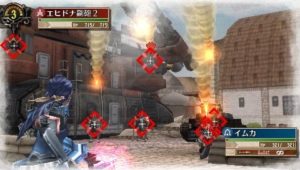
Now on the PSP which was also big in Japan. Here is fun fact little fact, out of the about 20 games that Sega Japan produced on PSP, only four or so were released in the west!
Edutainment was also a focus for Sega on the PSP, Sega actually a released one game for the West, which was called Mind Quiz. Jukugon is a falling blocks puzzle game with Japanese characters as the blocks. Mite Kiite Nou de Kanjite Crossword Tengoku is crossword game. Nou ni Kaikan: Aha Taiken! has more visual puzzles. Planetarium Creator Ohira Takayuki Kanshuu Homestar Portable is learning software about the planetaium and star system. Three soccer simulations were released, as a continuation of the PS2 ones. J.League Pro Soccer Club o Tsukurou! 6: Pride of J, J.League Pro Soccer Club o Tsukurou! 7: Euro Plus and J.League Pro Soccer Club o Tsukurou! 8 Euro Plus. Also a continuation of a PS2 series, are the Shining games, Shining Hearts, which is more of a traditional RPG however with a lot of alchemy/crafting type of gameplay in it (you mainly bake bread, no joke).
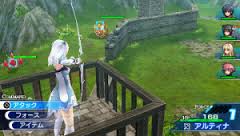
Shining Blade and Shining Ark actually use the same gameplay engine of Valkyria Chronices II and Valkyria Chronicles III. Of course, sadly we never got Valkyria Chronicles III. The Yakuza franchise received two entries on the PSP with Kurohyou: Ryu ga Gotoku Shinshou and Kurohyou 2: Ryu ga Gotoku Ashura Hen. Landstalker developer Climax, developed an RPG called Ore no Dungeon. Kamaitachi no Yoru 2: Tokubetsu Hen was another Chunsoft visual novel. Sakura Taisen 1 & 2 is the entry of the franchise on the PSP. 7th Dragon switched to the PSP, with two entries 7th Dragon 2020 and 7th Dragon 2020-II. Phantasy Star Portable 2 Infinity started the unfortunate trend of Phantasy Star games only releasing in the west. Now to the licensed games. Hatsune Miku: Project DIVA started that rhythm game franchise of course, and K-On! Houkago Live!! uses the same engine.
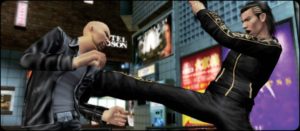
Making the argument for localizing PSP games is much harder than the DS, because of the rampant piracy the system had as well just being not that big in general. However, other companies like NIS America etc. managed to release quite a few RPG’s, so I think Sega could of done the same, with most of their games, would they have marketed and played the cards right.
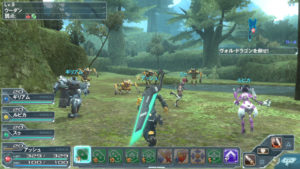
On Vita, free to play adaptions of phone/browser games stayed exclusive, which are Chain Chronicle V, Samurai & Dragons and The World End Eclipse. Of course, there is the big one, which is Phantasy Star Online 2. Resemblances to the PSP library include an off-line Phantasy Star, which is Phantasy Star Nova. An rhythm game based on Hatsune Miku, which is Miracle Girls Festival. There is also Project 575…remember the game Jukugon mentioned earlier, a falling block puzzler, where you combine Japanese characters. Well Project 575, makes you create your own music songs, using Japanese characters, and then acting them out in a rhythm game. Soccer Tsuku: Pro Soccer Club o Tsukurou! is the last game thus far in the franchise for dedicated devices. Also there is the new Virtual-On game, Toaru Majutsu no Dennou Senki Virtual-On.

People still want the Phantasy Star games for Vita really badly. Many said to have bought the Vita of prospect of PSO2. Games using and relying on Japanese characters are tricky like before – and then the new thing free to play, only in my opinion makes sense for titles which are highly supported and successful in Japan, but more on that later. Also the new Virtual-On game should hopefully come over, and I think it is likely.
For 3DS there is Hero Bank and Initial D Perfect Shift Online and the first and third Sega 3D Classics Collections. The first Classic Collection has two exlusive Master System games, and hopefully the third collection is on it’s way soon. Also I think Hero Bank looks pretty cool…from all kids games that numerous Japanese companies have made for the 3DS, I think that one looks the most interresting. Puyo Puyo Chronicle, mashup of the RPG and the classic puzzle mode, also still has a chance to come over. Tough of course through all of Sega’s handhelds Puyo Puyo has been absent since Fever.
Wii & HD Consoles & Downloads
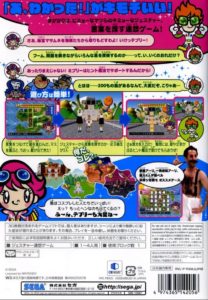
The Wii had three visual novels, two by Chunsoft (428: Fuusa Sareta Shibuya de, Imabikisou) and one based on a license (Suzumiya Haruhi no Heiretsu). Other licensed games are Mario Party knock-off Doraemon Wii: Himitsu Dougu Ou Ketteisen! and Bleach: Versus Crusade (3D brawler by Treasure). Two of the most interesting and quirky games, are Chindouchuu! Pole no Daibouken and Miburii & Teburii. The former is some sort of parody of 8-bit platformers containing jokes about Japanese culture. The latter is some game in which actors in costumes pantomime activities in front of CG backgrounds, and you write in Japanese characters the word for the activity they are acting out, all with some seemingly light RPG elements. Now I know, it is hard to really retool those types into playable format for westerners, but I think it would have been worth it!
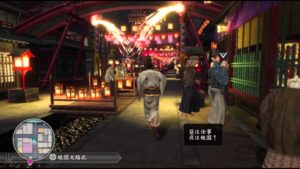
On PS3, the feudal Japan Yakuza games never made it over here (Ryu ga Gotoku Kenzan!, Ryu ga Gotoku: Ishin!), as well as the two remakes of 1&2 (Ryu ga Gotoku 1&2 HD Edition). The staple Soccer sim and Shining series had an entry each (Soccer Tsuku: Pro Soccer Club o Tsukurou! and Shining Resonance). Also a staple is a Initial D Arcade Stage port, this time with Initial D: Extreme Stage, based on Version 4. Downloadable arcade ports Cyber Troopers Virtual-On and Virtua Striker also were not available outside of Japan (on PSN &XBLA).
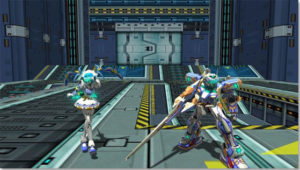
Also Cyber Troopers Virtual-On: Force for Xbox 360 technically was exclusive however it is region free and there is no language barrier. PS3 did also have an arcade port on its own which was Sega Golf Club.
PS4 has Ishin, PSO2 and the new Virtual-On game.
I think all games from the HD consoles were worth brining over. I think that Sega might have been the only game company to exclusively release big games like Yakuza only in Japan. Releasing Japan exclusives on PS3 onwards in general is rather uncommon.
PC & Mobile
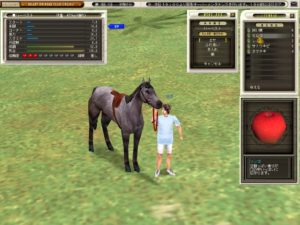
PC has had a strange evolution for Sega. In the 90s, it was all ports. But soon we saw original games. Sega’s staple of sport sims once again is part of the line-up. Three soccer ones, with the entries from 2007 or 2008 being actual online games. Three baseball ones, with the third coming out as recent as last year and being currently active (Yakyuu Tsuku!!).
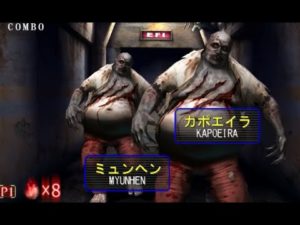
Horse racing got represented too, with Derby Owners Club Online. New Typing games were made also with Typing Space Harrier and The Typing of the Dead 2. Two F2P RPG’s were made, PSO2 and The World End Eclipse, tough the latter is not active anymore. Sega Splash! Golf also was a F2P game however was shut down in only a few months. Sega’s Mahjong game, MJ, game also is on PC. Two more games were odd (almost non-gaming) applications. Kaseki Play (Kaseki is Japanese for Fossils, which you dig up in the game), which was used to promote a Wacom Tablet in Japan. Another one iA – Internet Adventure, a sort of odd chat browser with 3D avatars which got shut down quickly.
Those typing games would have been great out here, again due to the cult status of the The Typing of the Dead.
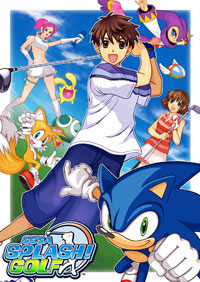
Now on to mobile section, feature phone games are ignored due to the obscurity of it. Here are the games: Ange Vierge (card battler), Border Break Mobile: Gun Front Hurricane (RPG), Chaos Dragon (RPG), Code of Joker Pocket (companion app for arcade game), Derby Owners Club (horse racing building simulator sim), Dragon Parade (RPG), Fortisia SEGAxLINE (action RPG), Fuuin Yuusha (top down RPG), Forutushia (side scroller action RPG), Ganchinko Baseball (baseball duh), Girls Holic (aimed at girls, dressing up), Hatsune Miku Live Stage Producer (rhythm game), Hortensia Saga (RPG), Monster Gear (RPG), Phantasy Star Online 2 es (the companion app), Phantom Tower Senki Griffon (2014) (RPG), Pro Yakyuu Team mo Tsukurou! (Baseball sim), Puyo Puyo Fever Touch (puzzle), Puyo Puyo Touch (puzzle), Puyo Puyo!! Quest (puzzle, match 3 game), Poitto-Hero (2015) (RPG), Sen no Kaizoku (RPG), Sankatsu Shoot (soccer), Soul Reverse Zero, MJ (companion to arcade and PC game), Squads (RPG), StarHorse Pocket (companion app The Flick of the Dead (2012) (typing of the dead variation with Japanese specific typing method), The World End Eclipse (2015) (RPG), Time Labyrinth (2014) (RPG), Champion Football (companion app to the arcade game), World Chain (RPG), Yumeiro Cast (yaoi dating thing).
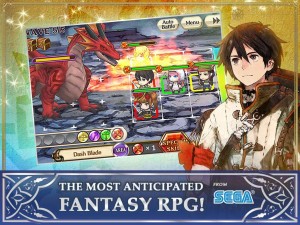
Localizing mobile games and F2P games in general is a very different thing compared to other games, as due to the very nature they can either last long, or die down quickly. Overall if the title is successful in Japan, then it can be expanded further. Sega’s early hits, like Kingdom Conquest or Samurai Bloodshow have been localized, but newer games have been kinda sloppy. Puyo was reskinned as Cranky Food Friends, and Chain Chronicle was badly handled by external company Gumi. And like I said, because Typing of the Dead is just that cool, a reskinned version for (western) mobile phones would have been great.
Arcade
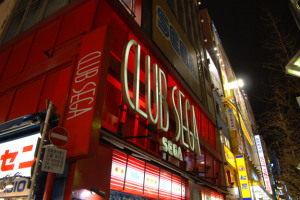
Japan only arcade games are a tricky subject. Overall this article is supposed to inform about Sega games you might not commonly know about. But most arcade games from Sega in the 21st century are not known about, due to arcades not being common anymore. Nonetheless I did cover a lot of them in my deeper arcade games article (WCCF, DOC, Quest of D, Key of Avalon, Sangokushi/Sengoku Taisen, Kancolle Arcade etc.). That article was from 2016, so the most recent game, Soul Reverse (Segalization did a good coverage on that), is not mentioned there. On my last article I mentioned Mahjong, Virtua Fighter and Initial D getting arcade exclusive updates and sequels. This continued to be the case of course. I didn’t mention World Club Champion Football and Derby Owners Club last part, because initial versions of those games did come out in the West. However future updates and sequels, did not.
Other games are Sega Golf Club (this one was actually ported to PS3, as mentioned), two Puyo games (one in 2003, and one in 2014), the arcade adaption of Nintendo game Rhythm Tengoku, and the quiz game series Answer X Answer. That game was actually ported to the JP versions of Yakuza 3 and 4. For the third time now, there is an entry in to the The House of the Dead franchise, with Ai Sareruyori Ai Shitai: The House of the Dead EX, a minigame light gun game for two players. That game had an english version developed – but was never released, much like Rent A Hero No. 1. And finally, Sega finally made some successful rhythm games after the failures in the early aughts. Maimai and Chunithm are staples in the Japanese arcade.
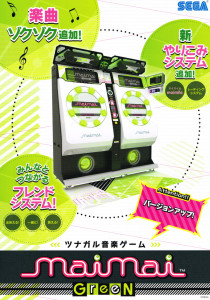
An interesting case are the Japanese arcade games that target kids (noticable by the miniature cabinets) that involve trading cards. It was such a success that Sega even made adaptions to handhelds. This is not too compatible with western arcades, but Sega did try to bring over the concept, evidenced by Dinosaur King having the cartoon, DS and arcade game all out in the West. 2007 was the year where they focused on making those types of games for Japanese arcades only. Like the mobile games, the list is long, so let’s go over them. Battle Police (a light gun game), Beetle DASH! (a Mushiking successor), Disney Magical Dance (rhythm game), Future Police Patrol Chase (driving game), Gekitsuioh (kids draw something on a card that will then be displayed in the game to shoot each other in a top down shooter game) Issyo ni Wanwan, Issyo ni Turbo Drive, Issyo ni Wanwan Waiwai Puppy (these Issyo games seem like kiddy rides with collectible cards and some sort interactive video), Marine & Marine (minigames involcing collecting fish), Bakugan: The Batters (this was on Cartoon Network so some of you might remember it), Ciao Manga Station (some some sort of a Manga tie in with a magazine aimed at girls), Edel Sand (a virtual sandbox, it received some coverage from sites like BBC), Ehonnotamago (storybook stories for kids where you interact with the story with a pen), Hero Bank Arcade (3 versus 3 game), Let’s Go Bus! (parent and kid obey the traffic rules driving the bus and also picking up animals), Let’s Go Safari! (educational game where you learn about animals), Transformers The Animated/Shooting (two players sort of chase each other on a highway and then transform to hit each other), Unochalle (educational interactive video), Zukannotamago (also educational interactive video).
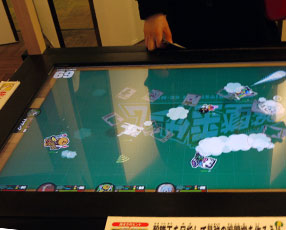
These are all games for the arcade (as of 2017). Like I said, it’s a very different argument to localize or port an arcade game to western markets. First of all, Sega needs to make arcade games exclusives so that people go into their arcades, which don’t have as many visitors as during the peak. Then there is the shift in audience – truly dedicated arcade players only exist in Japan, these are consumers who are willing to spend money and time day in and day out. Kids committing to collecting cards also is not that compatible to western locations. Games like Initial D failed in the west, because it is not as casual like Daytona USA. And something as casual as Daytona USA is also not that popular in Japanese arcades anymore – games that are big time sinks for a dedicated audience are the moneymakers these days.
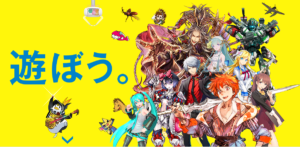
However when the arcade game has run it’s course in Japanese arcades, it would be nice for Sega to make an effort to truly squeeze everything out of that title. Go back into that game’s code, retool it with english text for PC and consoles and make some money. For example Quest of D, The Key of Avalon and Sangokushi Taisen run on old Xbox and Gamecube arcade hardware, so by 2010 or so, these games could of been recycled for a consumer release.
Conclusion
I mentioned in the last part, that when Sega was a first party company, there wasn’t actually that much of a gap or drughts between releases. Sega released many titles.
Now I understand companies need to be market savy and save and only release titles that are sure to be hits, but really that is what goes against Sega is about. Daring to release weird, out there games is what Sega is known for. Take this quote from Takashi Iizuka from 2013
Creating completely new games and original intellectual properties and evolving them diversely to meet current needs has always been SEGA’s forte.
I know it is very hard for a lot of people to take this statement seriously. Some people might say that Nintendo is more of a risk taker with their software these days. However Sega still feels that way in Japan, and I can’t help but feel that it is only the case with Japan. Now it’s not like they didn’t try in the West and not every Japanese game is worth bringing over (basically all sports and licensed games you can forget about). But ultimately, when it comes to consistently fulfilling what Sega is about – a comprehensive diverse line up of games (as well as advertising it), Sega made a better job at that in Japan.
Now of course things are getting a lot better since last year (thanks to Atlus USA), and it was really bad for while between 2013 and 2016, where we received little to nothing.
Now of course, I ask for your opinion and ask: which games you would like to come over?
Missed out on part 1 of our retrospective? Check it out here!
Ad:
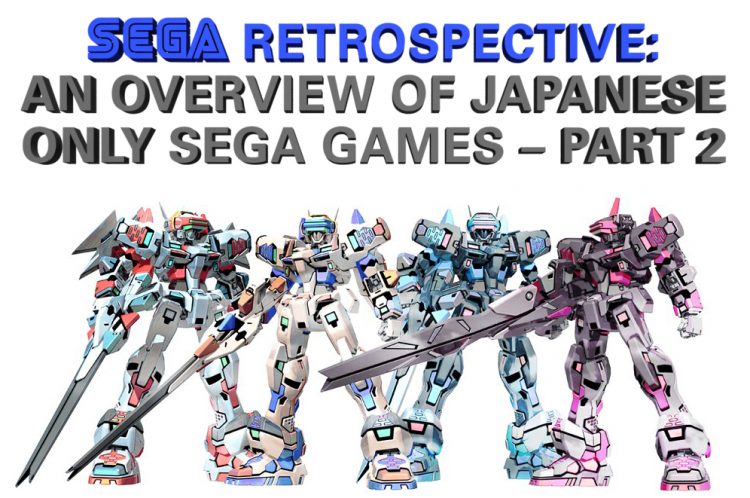
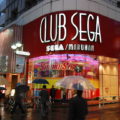
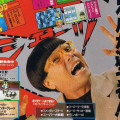
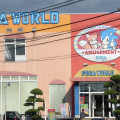

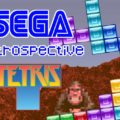
Definitely PSO2 such a shame Sega gave up, it even had a western site and was shown on E3. Also Sen no Kaizoku was localized.
Yeah Sega just keeps on being Sega in Japan. People in the West have this really warped opinion about them, but if you long for the old days all you really need to do is sign up for some Japanese language classes. 😉